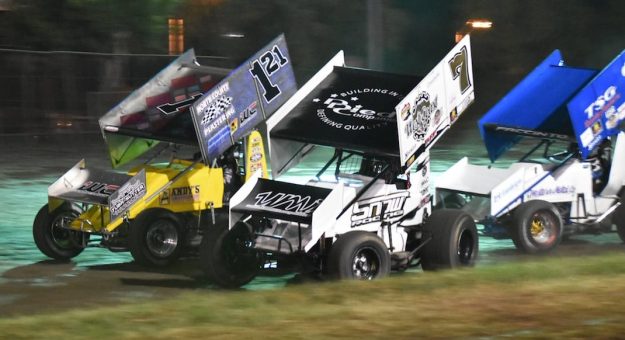CHICO, Calif. — Last year, Silver Dollar Speedway raced only twice — including once on a Friday in early March, when 250 fans were allowed in the stands.
The following week, regulations brought the number of fans allowed to zero.
The second race in July was a trial balloon to test to see if racing with no fans was financially viable. The fact it was not tried again answers that question. That night ultimately ended its season.
Promoter Dennis Gage faces the same obstacles as all other California tracks — a strict approach by politicians towards outdoor activities.
The famed quarter-mile oval in Chico will open its season on March 5-6 with the Silver Cup featuring winged 360 sprint cars. Unless things change significantly in Butte County, the event could play the same role as the 2020 July race. The Silver Cup is only possible due to sponsorship, a reduced purse and projected back gate income.
Gage hopes those things will get him close to a break-even weekend.
“If you get right down to it, the numbers and forecast are actually worse than they were a year ago, but they are declining which is good news,” Gage said. “The basic thing I’m being told is we’ve got to get to the orange tier to have any people in Chico (the tiers for counties indicate trends in new cases). Orange tier is not for sure, and it would be up to the county health department as to what percent of stands could be used.
“There are no state guidelines that govern auto race tracks. They do have a guideline for horse tracks, and most areas have used that guideline, but it doesn’t apply very well. When we get to yellow, we are going to be allowed to have somewhere between 25 and 50 percent. With the slow rollout of the vaccine and the fact the numbers are still pretty high, we built a schedule based on that.”
The track will not schedule another race until, at least, the end of April. Gage is concerned that timetable is optimistic. The fairgrounds on which the track is located is hoping to have a county fair that Gage hopes will create local interest and the end of May will provide a better outlook for the track.
“Chico is a little different,” Gage said. “The fairground wants to follow whatever rules they have to follow because they are tied at the hip to both the federal government and the state of California. Chico benefits from fire camps as the state transfers large amounts of money to the fairgrounds for hosting firefighters.”
Use permits are another challenge facing auto racing promoters in California. Gage is concerned that without a season, the track risks losing its permit.
“The majority of use permits for these facilities is based on continuous operation and it is very clear,” Gage said. “If you quit doing whatever operations you have been doing every year, you are then in jeopardy of losing that use permit. Nobody is putting out use permits now that match the conditions years ago when we got the initial use permit.
“Now, the new use permits can have city noise ordinances, and all of these new limits that we currently don’t have on our use permits, and they are contrary to auto racing. Butte County has given us approval to race all we want but without fans. Everything we do has seen increased costs to the point where racing without fans is not a practical thing.”
The Silver Cup will take place, but the rest of the season is far from guaranteed. Gage said there are a few special events he plans to host, but his regular schedule is up in the air.
“We need to have some kind of attendance,” said Gage. “We are fortunate that Chico sits quite a few people so if we can get to 50 percent, we can talk about holding these events. Less than 50 percent is pretty tough. At that percentage, we can handle most of the events except the Louie Vermeil Classic and Gold Cup. Those require 100 percent grandstands. But that is September, and if we are not done with this by September, then we are all in trouble.”
Gage also promotes Marysville Raceway, located 45 minutes south of Chico. Located on private property, that track avoids some of the issues facing fairgrounds facilities.
However, one source of funding that allowed the track to race many times last year is not available this season. Many California tracks were able to race because of streaming services agreements provided income. With streaming service FloRacing changing its business model, that is no longer a viable option.
“We don’t have the big checks coming from TV this year because Flo has taken a different direction,” said Gage. “They are not doing as much local, but instead they have contracts with the big series. If we don’t get some people, we aren’t going to be able to do races like we did last year.”
Gage is looking for options, and has surveyed the track’s drivers to get their thoughts on options including cutting purses, raising pit fees or not racing. The majority suggested cutting the purses. Gage has refunded last year’s membership money since there wasn’t a season.
“I think everybody is worn out,” Gage said. “Even the people who have been regulating this are worn out. So, if everybody is worn out, there is going to be a lot more emphasis on fixing it. I think there is a chance we will get pretty well back to normal this year, but when that is going to happen is the big question.”
